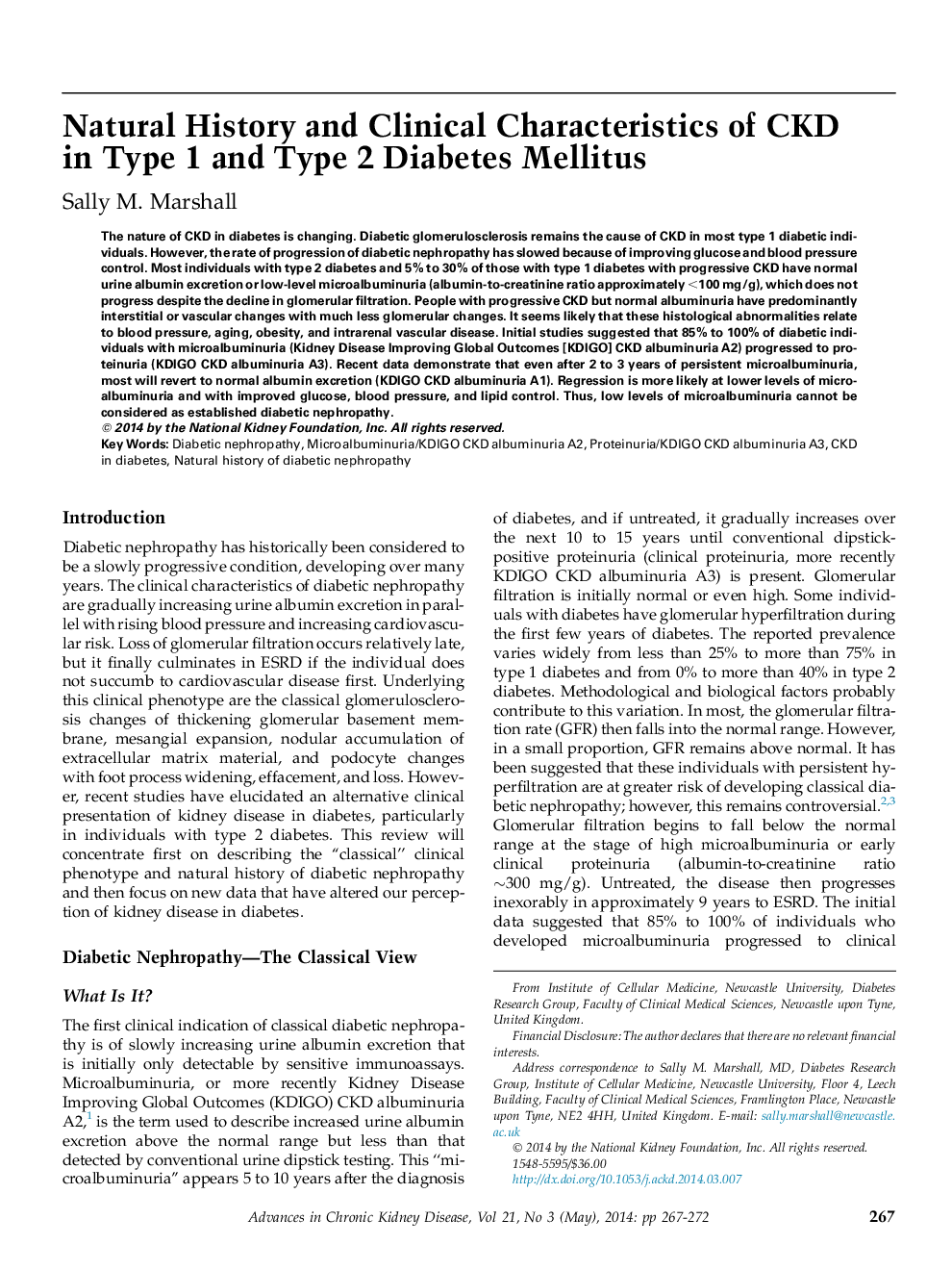| Article ID | Journal | Published Year | Pages | File Type |
|---|---|---|---|---|
| 3846509 | Advances in Chronic Kidney Disease | 2014 | 6 Pages |
Abstract
The nature of CKD in diabetes is changing. Diabetic glomerulosclerosis remains the cause of CKD in most type 1 diabetic individuals. However, the rate of progression of diabetic nephropathy has slowed because of improving glucose and blood pressure control. Most individuals with type 2 diabetes and 5% to 30% of those with type 1 diabetes with progressive CKD have normal urine albumin excretion or low-level microalbuminuria (albumin-to-creatinine ratio approximately <100Â mg/g), which does not progress despite the decline in glomerular filtration. People with progressive CKD but normal albuminuria have predominantly interstitial or vascular changes with much less glomerular changes. It seems likely that these histological abnormalities relate to blood pressure, aging, obesity, and intrarenal vascular disease. Initial studies suggested that 85% to 100% of diabetic individuals with microalbuminuria (Kidney Disease Improving Global Outcomes [KDIGO] CKD albuminuria A2) progressed to proteinuria (KDIGO CKD albuminuria A3). Recent data demonstrate that even after 2 to 3Â years of persistent microalbuminuria, most will revert to normal albumin excretion (KDIGO CKD albuminuria A1). Regression is more likely at lower levels of microalbuminuria and with improved glucose, blood pressure, and lipid control. Thus, low levels of microalbuminuria cannot be considered as established diabetic nephropathy.
Keywords
Related Topics
Health Sciences
Medicine and Dentistry
Nephrology
Authors
Sally M. Marshall,
